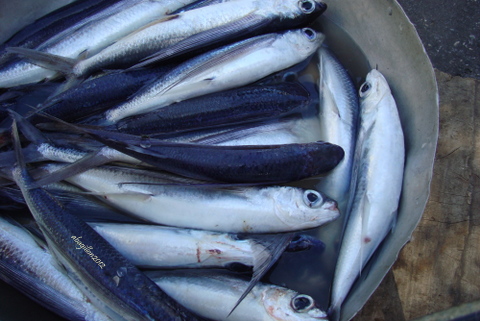But I am sure you will agree with me that they are lovely! Come on please agree with me. Or i will only have the butterflies on my side of the debate! Weeds or not weeds, I like them!
The pink flowers are commonly called 'cadena de amor' or chain of love, maybe because each small flowerette looks like a heart. I am sorry I lack the evidence for that today, maybe i will show it to the judge next time. It actually is Antigonon leptopus, or coral vine, a native of Mexico so also called Mexican creeper. And this is an evidence that an introduced species usually becomes invasive.
Without the coral vine, the expanse of the meadow looks like this, with only this flowers. It is Tridax procumbens, a declared noxious weed in many states of the US, but it is not declared invasive here maybe because it is just not written as is yet, but it really is very invasive. It's reported to have come from tropical America. Cattle doesn't eat this but the butterflies and bees frequent them too.
This very showy inflorescence is the Clerodendrum speciosissimum, originally from Java. It might be cultivated in other areas, but they just grow under the coconut trees and other marginal lands in our property. With the so plenty of seeds produced, they eventually grow anywhere in our property. I tried once to plant it in containers, but it didn't grow as nice as when left on its own. And the smell of the leaves will deter gardeners in growing this near the well trodden paths. Better grow this at the back of the property. They are better left seen but untouched!
Again, this is another volunteer that i just saw growing nicely under the bushes. It produces those white beautiful berries, but the flowers are so minute, i haven't observed them. I am still looking for its ID, i hope someone will again help me with this, as they've done with my NOIDs in the past. Thank you.












.jpg)

![Outdoor-Wednesday-logo_thumb1_thumb1[1]](http://lh4.ggpht.com/-6mJx9yPPdlE/UGJkauAXH7I/AAAAAAAAE2g/0m1Yjb2oUzU/Outdoor-Wednesday-logo_thumb1_thumb1%25255B1%25255D.png?imgmax=800)



















![Outdoor-Wednesday-logo_thumb1_thumb1[2]](http://64.19.142.13/lh6.ggpht.com/-1Y2B7szx4DA/UFj9JycqoeI/AAAAAAAAE0E/kCbWQk_b1IY/Outdoor-Wednesday-logo_thumb1_thumb1%25255B1%25255D.png?imgmax=800)



















